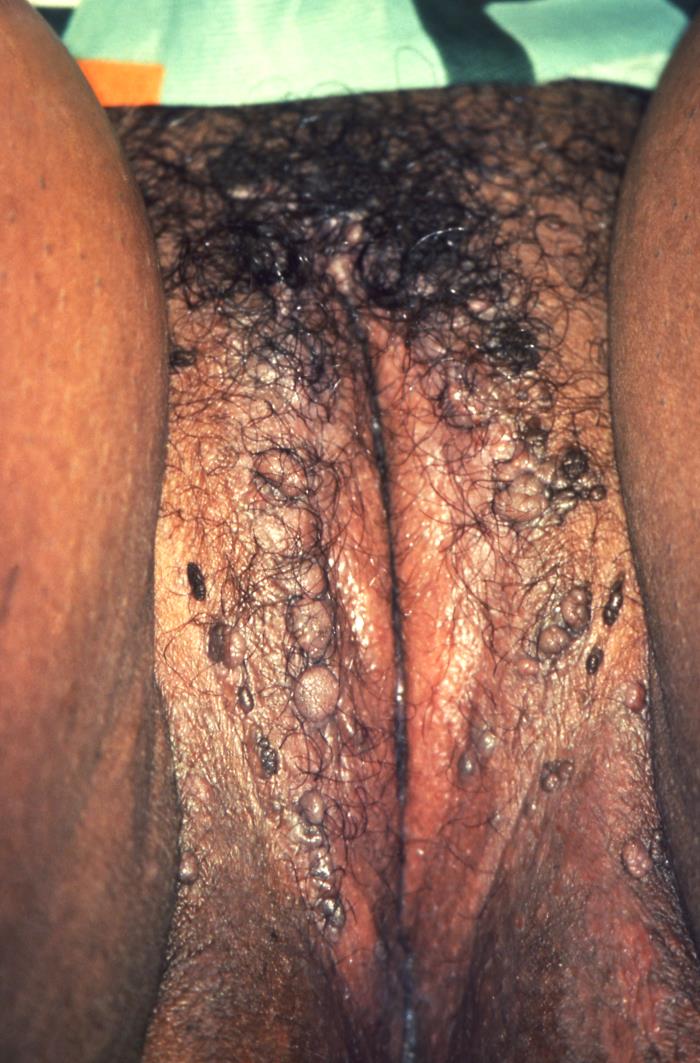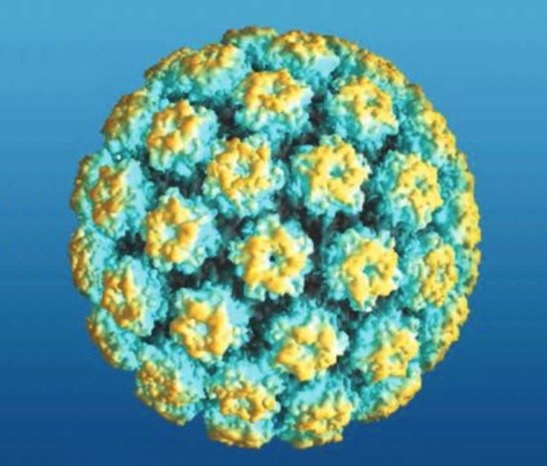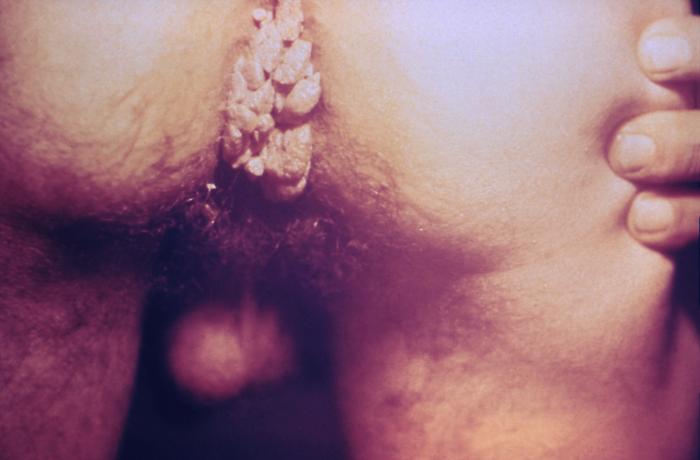Playlist
Show Playlist
Hide Playlist
Human Papilloma Virus (HPV) and Condolymata Acuminata
-
Slides Virally-mediated Skin Lesions.pdf
-
Download Lecture Overview
00:02 And now, let's talk about human papilloma virus which of course can cause condyloma acuminata. 00:08 Our focus today is on skin manifestations but remember that HPV has 200+ different subtypes some of which can cause things like cervical cancer, particularly subtypes 16, 18 and 31. 00:22 We're not gonna talk about more about those today, we're gonna focus on the skin. 00:25 The HPV has multiple wart subtypes and we're gonna go through a few of them in just a few moments. 00:32 The way that it works is that HPV is transmitted through contact from infected skin or mucosa and it can certainly be sexually transmitted. 00:40 It infects squamous epithelium of the skin and the mucous membranes leading to benign epithelial hyperplasia. 00:47 Usually, the incubation period is maybe 3 weeks to as long as 8 months before you start to see any manifestations. 00:54 What you'll see actually on the skin are hyperkeratotic papules and if you look on that finger all the way over on the far right, you can see those cauliflower-like papules or nodules on the tip of the finger. 01:07 The immune status of the host dictates the size and number of lesions and folks who are immunocompromised can have lots and lots of these verrucous lesions in multiple locations. 01:19 Note by the way the red and black dots on the cauliflower-like lesions. 01:23 These are evidence of thrombosed capillary loops and particularly with plantar warts can help be distinguished between an HPV-mediated wart compared with something like just a simple hyperkeratotic corn. 01:37 The diagnosis is essentially clinical, you shouldn't really need to do a biopsy or any other testing and you're gonna treat them with watchful waiting, 1 out of 3 of them will regress spontaneously. 01:48 You can however, if patients are inpatients or if they're uncomfortable, you can treat with topical salicylic acid. 01:53 You could use a more aggressive treatment like topical fluorouracil or imiquimod, or you can also use cryotherapy, though cryotherapy can be somewhat painful. 02:03 Next up, we'll talk about the four different subtypes of warts caused by human papilloma virus. 02:08 First stop, plantar warts. 02:10 These, as you might imagine, appear on the plantar surface of the foot or on the toes. 02:15 As shown here, we've got several lesions on the plantar side of the great toe. 02:19 These are painful at pressure points and it's basically pain with ambulation that leads patients to come to their primary care provider to get them taken care of. 02:27 Next stop, the most common type of wart is common warts. 02:32 These are also called verruca vulgaris. 02:34 You'll commonly see them on the hands and fingers of kids and they disrupt the finger prints and one way to tell you that you've efffectively treated the lesion is when a fingerprint start to immerge again from behind these cauliflower-shaped lesions. 02:48 Next one is anogenital warts and again, I'll remind you, these are also called condylomata acuminata. 02:54 They are pretty much only transmitted through sexual contact and they're caused by these serotypes 6 and 11. 03:02 These are low risk serotypes, they don't cause cancer and those serotypes alone make up about 90% of all anogenital wart lesions. 03:10 And lastly, flat warts. 03:12 These are flat, they don't have that cauliflower-shaped appearance as you can see here on the face. 03:18 They're flat-topped, pink papules, oftentimes on the face or on the hands and they're much less keratotic than some of the other ones. 03:26 So less rough and indurated and nodular. 03:31 Alright, so knowing all that information, now, let's quickly revisit our case. 03:37 So, we've got a sexually active young man with asymptomatic, skin-colored, fleshy papules scattered on the shaft of his penis. 03:46 Okay, this is definitely condylomata acuminata. 03:49 Again, also known as genital warts caused by HPV. 03:54 In contrast to treating common warts, we tend to recommed imiquimod as our first line approach, followed by cryotherapy. 04:02 As you might imagine, cryotherapy on the shaft of the penis is going to be painful. 04:06 And again, you can remind the patients that about a third of these lesions will resolve without any treatment whatsoever. 04:12 So sometimes, just watchful waiting is the most prudent approach.
About the Lecture
The lecture Human Papilloma Virus (HPV) and Condolymata Acuminata by Stephen Holt, MD, MS is from the course Skin Infections.
Included Quiz Questions
All of the following options are valid for the treatment of human papillomavirus skin lesions EXCEPT...?
- ...Mohs surgery
- ...topical salicylic acid
- ...topical imiquimod
- ...cryotherapy
- ...watchful waiting
Anogenital warts are commonly associated with which of the following human papillomavirus serotypes?
- Serotypes 6 and 11
- Serotypes 16 and 18
- Serotypes 2 and 4
- Serotypes 3 and 10
- Serotypes 27 and 41
Customer reviews
5,0 of 5 stars
| 5 Stars |
|
5 |
| 4 Stars |
|
0 |
| 3 Stars |
|
0 |
| 2 Stars |
|
0 |
| 1 Star |
|
0 |






